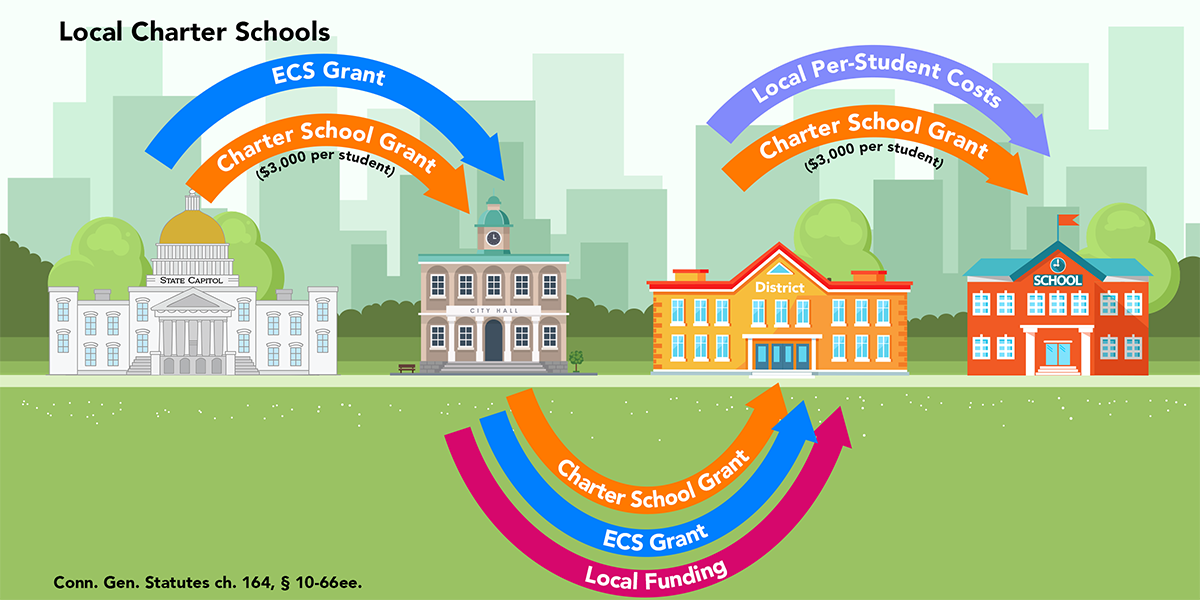Introduction
Is there a relationship between Hartford-region public schools and their student spending?
The Hartford region is home to many different types of public schools. With a large variety for parents and students to choose from, differentiating one school type from another can be difficult. There are traditional public neighborhood schools, magnet schools, charter schools, technical high schools and special needs schools and programs. Even schools within the same type differ. For example, magnet schools are not all the same within the Hartford region, there is great variety within the type. Some are operated by the Capitol Region Education Council (CREC) which has the ability to charge tuition, while others are in the Hartford Public School District (HPS) and do not charge tuition. Because Hartford is an open choice district, students also have the option to attend a handful of other magnet schools located in more suburban areas and districts. These magnet schools were categorized as "Other Magnet" for this data study. Schools were manually grouped into five different types, Neighborhood, CREC Magnet, HPS Magnet, Other Magnet and Charter. While school type is not indicative of education quality, it does factor directly into school funding. Connecticut’s school funding relies on a complex set of 10 different formulas that differ by school type. They have been put into place over the last two decades of tumultuous politics. Only one of these formulas takes into account actual student needs, leaving other types of public schools with a generic standard amount of funding ("How CT Funds Education"). Not all schools in Hartford are the same and neither is their funding. Since these funding formulas differ greatly and have been created over the last several years it raises the question, is there a relationship between school type and per-student spending? As well as how has this per-student spending by type changed over time?

The School and State Finance Project outline the ten different formulas for funding. These formulas are based on type of public school recieving funding.
Image Credit: School and State Finance Project | For full collection of infographics visit the How Connecticut Funds Education web page.
It’s imperative to understand how Hartford public school types have gotten to their current per-student funding before trying to predict or understand where it is going. By tracking what has occurred in per-student funding by school type as well as looking into why, a detailed history can be uncovered. While history does not always dictate the future, it does show how per-student spending has arrived at its current state. Through exploring the history as well as present state of this relationship, previously held assumptions are challenged and surprising differences emerge. The traditional Neighborhood schools are often assumed to be less desirable as they typically are not advertising and recruiting students and families to enroll. While Magnet and Charter schools may be seen as desirable due to their intense marketing campaigns and selective application process. The findings detailed below show a different side to these assumptions. Hartford Neighborhood schools experienced the greatest increase in per-student spending over the past four years. Currently as of the 2021 SYE, Neighborhood schools are spending almost the same amount as the assumed more desirable CREC Magnet schools. Surprisingly, not all magnet schools spend the same amount as CREC schools spent significantly more than the two other types of magnet schools. These findings highlight the many different factors that go into per-student funding as well as how legislature and formulas influence how much a school is able to spend on their students. Furthermore, the findings show how presumptions about school types and spending are not always based on data or truth.